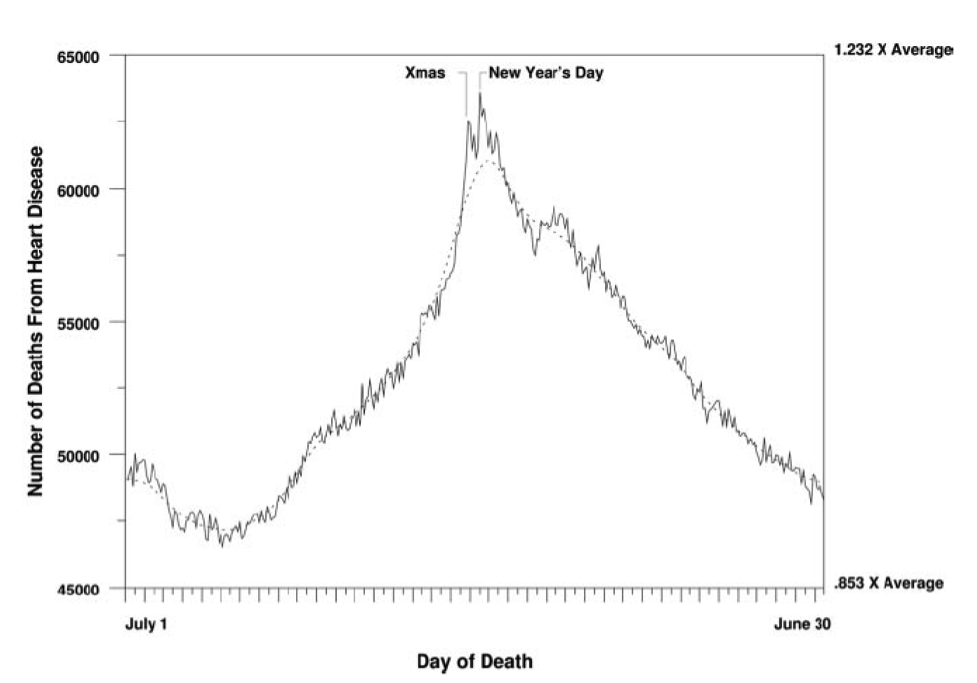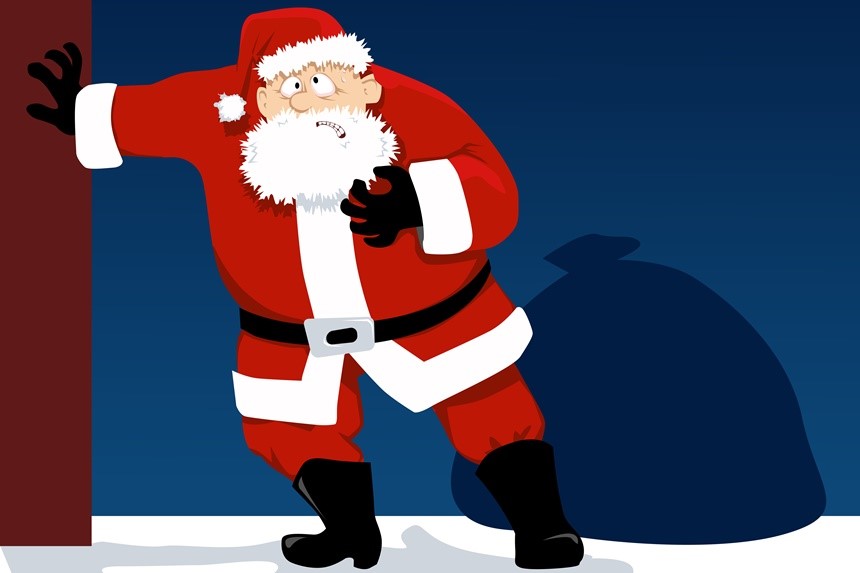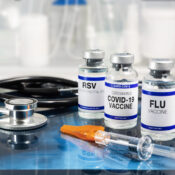“Your Weekly Checkup” is our online column by Dr. Douglas Zipes, an internationally acclaimed cardiologist, professor, author, inventor, and authority on pacing and electrophysiology. Dr. Zipes is also a contributor to The Saturday Evening Post print magazine. Subscribe to receive thoughtful articles, new fiction, health and wellness advice, and gems from our archive.
Order Dr. Zipes’ new book, Damn the Naysayers: A Doctor’s Memoir.
As we approach the holiday season, it is important to take stock of one’s health status. I have emphasized well known risk factors such as smoking, exercise, hypertension, diabetes, and diet. But what about less obvious variables, such as time of year and the impact of holidays?
Multiple studies have shown that mortality from a variety of causes including sudden cardiac deaths, suicides, homicides, and automobile fatalities increases during the winter months.
Explanations include the impact of cold weather, as well as behavioral changes that can involve travel, eating, drinking, exercising, working, and vacationing. Delay in seeking or finding competent medical attention while on holiday is also a potential reason. The short days of winter with overall reduced sunlight exposure may play a role.
One study of cardiac deaths in Los Angeles found that deaths from coronary heart disease peaked around the holiday period of Christmas and the New Year, despite very little outdoor temperature change.
That observation raises the question whether the actual holidays play a role rather than the cold weather.
A study published almost fifteen years ago investigated whether distinct mortality peaks occurred during the Christmas and the New Year’s holidays. The researchers examined 53 million U.S. death certificates from 1973 through 2001 and noted that a spike in daily mortality of almost 5 percent occurred for both cardiac and noncardiac patients during the Christmas/New Year’s holiday period. As can be seen in the figure, the solid line indicates actual mortality while the interrupted line indicates the mortality that would have occurred without the holidays.

Another study published two years ago sought to eliminate the role played by winter’s cold weather by studying holiday deaths in New Zealand where the seasons are reversed compared to that of North America, so there it is summer in December. The researchers analyzed New Zealand mortality data for a 25-year period (1988-2013) and found evidence of a Christmas holiday effect with an excess event rate of 4.2 percent leading to about four additional deaths per annum (it’s a small country). The study also found that people who died from heart-related causes during Christmastime were slightly younger (76.8 years) than those who died of similar causes during the rest of the year.
It is clear that we can now add Christmas/New Year’s holidays as a risk factor for increased cardiac and noncardiac mortality.
But why? What are the causes?
Among the multiple potential explanations for this association, including overindulgence in holiday food and drink, as well as the emotional stress involved, is the possibility that the holidays induce delays in seeking necessary medical treatment. Sometimes people who are sick attempt to “hold on” until the holiday season is over and contribute to the twin holiday mortality spikes. Whatever the reason(s), cardiac and noncardiac deaths clearly surge during Christmas and the New Year.
The take home message for readers is advice I’ve given before: moderation in all things, including moderation. Add to that the admonition not to delay seeking medical help for new or worsening old symptoms — delays that could prove fatal.
Despite the increased risk, enjoy the holidays!
Become a Saturday Evening Post member and enjoy unlimited access. Subscribe now



